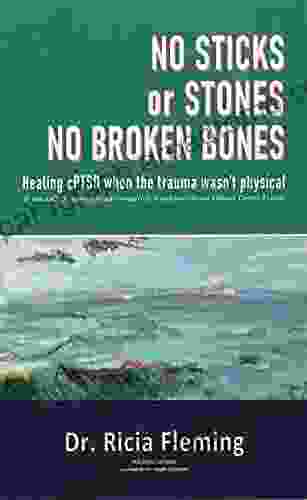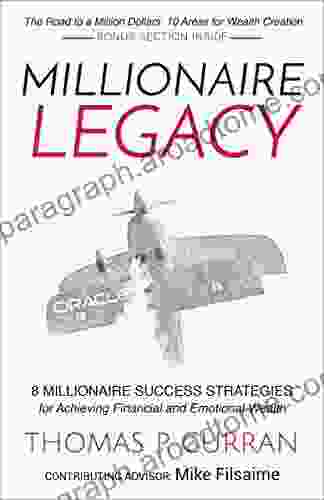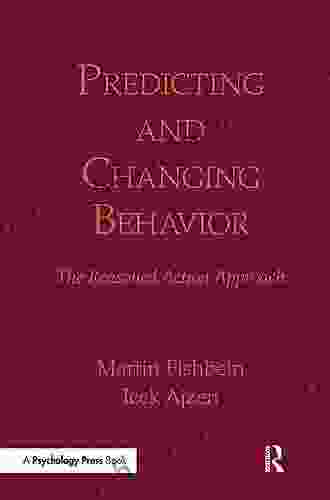Predicting and Changing Behavior: Unlocking the Power of the Reasoned Action Approach

Understanding and predicting human behavior is a complex task that has fascinated researchers for centuries. While many factors influence our actions, the Reasoned Action Approach (RAA) has emerged as a powerful and influential theory that provides a framework for understanding and changing behavior. This article explores the RAA, its key principles, and its practical applications in various domains, highlighting its significance for individuals, organizations, and society as a whole.
The RAA, developed by social psychologists Icek Ajzen and Martin Fishbein, is a theory that attempts to predict and explain human behavior by focusing on the individual's intentions. According to the RAA, an individual's behavior is determined by two main factors: their attitude towards the behavior and their subjective norm.
Attitude refers to an individual's overall evaluation or feeling towards a specific behavior. It represents the extent to which the person likes or dislikes the behavior and is influenced by various factors, including beliefs, values, and past experiences. A positive attitude increases the likelihood of performing the behavior, while a negative attitude decreases it.
4.5 out of 5
| Language | : | English |
| File size | : | 4067 KB |
| Text-to-Speech | : | Enabled |
| Screen Reader | : | Supported |
| Enhanced typesetting | : | Enabled |
| Word Wise | : | Enabled |
| Print length | : | 527 pages |
Subjective norm reflects an individual's perception of what others think they should do in a given situation. It is influenced by social pressure, expectations, and beliefs about the approval or disapproval of significant others, such as family, friends, or colleagues. A strong subjective norm can motivate an individual to perform a behavior even if their own attitude is not favorable.
The RAA proposes that intention is a key mediator between attitudes, subjective norms, and behavior. Intention refers to an individual's conscious plan to engage in a specific behavior. It is formed by considering both the attitude towards the behavior and the subjective norm. A strong intention, supported by favorable attitudes and subjective norms, predicts a higher likelihood of performing the desired behavior.
The RAA has been widely used in various domains to understand and change human behavior. Its applications include:
The RAA has been extensively applied in health behavior change interventions, including smoking cessation, exercise promotion, and healthy eating. By understanding the attitudes and subjective norms associated with specific health behaviors, researchers and practitioners can develop tailored interventions to promote positive behavior change.
The RAA has helped marketers understand consumer behavior and develop effective marketing strategies. By identifying the attitudes and subjective norms associated with different products or services, businesses can design targeted campaigns to influence consumer decisions.
The RAA has been used to address environmental issues, such as recycling, energy conservation, and sustainable practices. By understanding the factors influencing environmental behaviors, individuals and organizations can promote sustainable lifestyles and reduce their environmental impact.
The RAA has been applied in organizational settings to improve employee motivation, job satisfaction, and organizational performance. By understanding the attitudes and subjective norms related to work-related behaviors, organizations can develop strategies to foster employee engagement and productivity.
The RAA has been widely praised for its ability to predict and change behavior. It provides a clear and logical framework for understanding the determinants of human action. However, it also has some limitations:
The RAA assumes that intention strongly predicts behavior, but in reality, there can be a gap between intention and actual behavior. Other factors, such as situational constraints, motivation, and self-control, can influence behavior.
The RAA assumes that attitudes and subjective norms are relatively stable over time. However, these factors can be influenced by various experiences and external factors, which may limit the predictive power of the theory over longer periods.
The RAA may be less applicable in certain cultural and contextual settings where social norms and values differ significantly from those in the Western cultures on which the theory is primarily based.
Despite its limitations, the RAA remains a valuable tool for understanding and changing behavior. Ongoing research is exploring ways to address its limitations and extend its applicability. Future directions include incorporating contextual factors, exploring the role of emotions, and developing interventions that target multiple levels of influence, from individual to societal.
, the Reasoned Action Approach provides a robust framework for predicting and changing human behavior. By understanding the key principles of attitude, subjective norm, and intention, individuals, organizations, and societies can design effective interventions to promote positive behavior change. As research continues to advance, the RAA will undoubtedly play an increasingly significant role in shaping our understanding and influence on human behavior.
Descriptive Keywords for alt Attribute:
- Reasoned Action Approach
- Attitude
- Subjective Norm
- Intention
- Behavior Change
- Health Behavior
- Consumer Behavior
- Environmental Behavior
- Organizational Behavior
4.5 out of 5
| Language | : | English |
| File size | : | 4067 KB |
| Text-to-Speech | : | Enabled |
| Screen Reader | : | Supported |
| Enhanced typesetting | : | Enabled |
| Word Wise | : | Enabled |
| Print length | : | 527 pages |
Do you want to contribute by writing guest posts on this blog?
Please contact us and send us a resume of previous articles that you have written.
 Book
Book Novel
Novel Page
Page Chapter
Chapter Text
Text Story
Story Genre
Genre Reader
Reader Library
Library Paperback
Paperback E-book
E-book Magazine
Magazine Newspaper
Newspaper Paragraph
Paragraph Sentence
Sentence Bookmark
Bookmark Shelf
Shelf Glossary
Glossary Bibliography
Bibliography Foreword
Foreword Preface
Preface Synopsis
Synopsis Annotation
Annotation Footnote
Footnote Manuscript
Manuscript Scroll
Scroll Codex
Codex Tome
Tome Bestseller
Bestseller Classics
Classics Library card
Library card Narrative
Narrative Biography
Biography Autobiography
Autobiography Memoir
Memoir Reference
Reference Encyclopedia
Encyclopedia Orysia Dawydiak
Orysia Dawydiak Vijai Kumar Gupta
Vijai Kumar Gupta Jo Marchant
Jo Marchant Joan Liebmann Smith
Joan Liebmann Smith Jim Wiles
Jim Wiles Kyle Cassidy
Kyle Cassidy Lily Samuel
Lily Samuel John Edgell
John Edgell Peter Felten
Peter Felten John A White
John A White Marie Dunford
Marie Dunford Jeremy K Leggett
Jeremy K Leggett Paul Hamill
Paul Hamill Jim Morton
Jim Morton Joe Schofield
Joe Schofield Michael Warner
Michael Warner Jill Harrington
Jill Harrington Jeorge Rosenthal
Jeorge Rosenthal Jordi Josa
Jordi Josa Jo Stepaniak
Jo Stepaniak
Light bulbAdvertise smarter! Our strategic ad space ensures maximum exposure. Reserve your spot today!

 Samuel BeckettPivot Vision for the New University: Reshaping Higher Education for the 21st...
Samuel BeckettPivot Vision for the New University: Reshaping Higher Education for the 21st...
 William ShakespeareFortunate Son: My Life, My Music - An Intimate Portrait of a Rock 'n' Roll...
William ShakespeareFortunate Son: My Life, My Music - An Intimate Portrait of a Rock 'n' Roll... Caleb LongFollow ·2.2k
Caleb LongFollow ·2.2k Jared PowellFollow ·3.6k
Jared PowellFollow ·3.6k Hugh BellFollow ·18.3k
Hugh BellFollow ·18.3k Natsume SōsekiFollow ·5.4k
Natsume SōsekiFollow ·5.4k Theodore MitchellFollow ·12k
Theodore MitchellFollow ·12k Evan HayesFollow ·3.8k
Evan HayesFollow ·3.8k Yasunari KawabataFollow ·14.5k
Yasunari KawabataFollow ·14.5k Alexandre DumasFollow ·6.8k
Alexandre DumasFollow ·6.8k

 Julio Cortázar
Julio CortázarAn Illustrated Encyclopedia Of Live Concerts And...
Immerse yourself in the...

 Edgar Cox
Edgar CoxNon Physically Assaultive Attachment Based Chronic Covert...
What is Covert...

 Robert Reed
Robert ReedThe Baseball of Why: Unraveling the Intricacies of...
Step up to the plate and...

 Aldous Huxley
Aldous HuxleyTacos and Beer: An Atmosphere of Flavorful Delights
In the realm of culinary adventures,...

 Stan Ward
Stan WardUnlock the Secrets of the Aramaic Jesus: Revelations of a...
Journey Back to the Roots of...

 Vincent Mitchell
Vincent MitchellMillionaire Success Strategies: Your Blueprint for...
Unlock the...
4.5 out of 5
| Language | : | English |
| File size | : | 4067 KB |
| Text-to-Speech | : | Enabled |
| Screen Reader | : | Supported |
| Enhanced typesetting | : | Enabled |
| Word Wise | : | Enabled |
| Print length | : | 527 pages |








